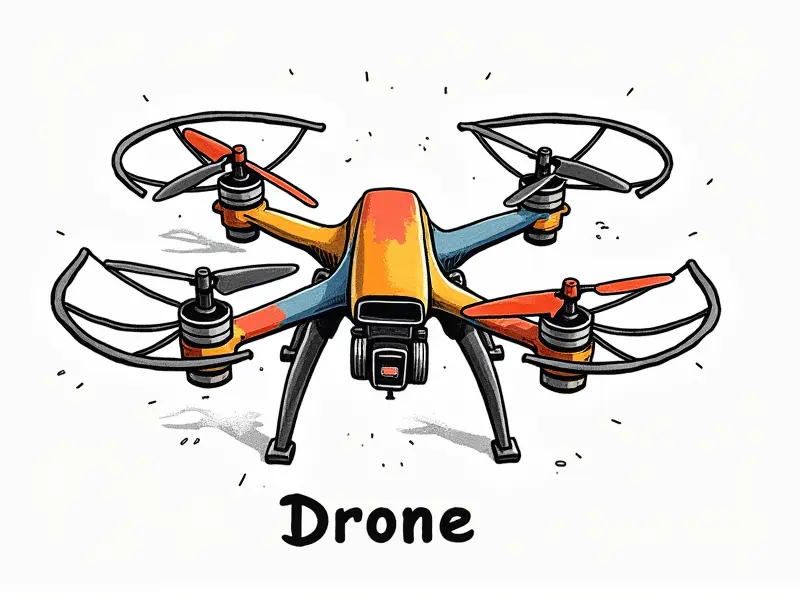What is an RC plane?

Beginner's Guide to RC Planes
Welcome to the exciting world of remote control (RC) planes! Whether you're a hobbyist looking for a new challenge or someone interested in aviation, this guide will provide you with all the essential information about RC planes. From understanding basic concepts to choosing your first model, we'll cover everything you need to know.
Understanding RC Aircraft Basics
An RC plane is an aircraft that can be controlled remotely from the ground using a transmitter and receiver system. These planes come in various sizes and designs, each offering unique features and capabilities. They are popular among hobbyists for their ability to simulate real-world flight experiences.
How Do RC Planes Work?
The operation of an RC plane involves several key components:
- Transmitter (TX): The handheld device used by the pilot to control the aircraft. It sends signals to the receiver installed in the plane.
- Receiver (RX): This component receives signals from the transmitter and converts them into commands for the servos, which control the rudder, ailerons, elevator, and throttle.
- Servos: Small motors that move the control surfaces of the plane in response to signals from the receiver.
The pilot uses the transmitter to adjust the direction and speed of the aircraft. By manipulating the controls on the TX, you can make the RC plane take off, land, perform aerobatic maneuvers, or simply cruise through the sky.
Best RC Planes for Beginners
If you're new to RC planes, it's important to start with a model that is easy to handle and forgiving of mistakes. Here are some top choices:
- Flying Wing Models: These planes have no tail section and rely on wing surfaces for control. They are stable and require less maintenance.
- Educational Kits: Many manufacturers offer kits designed specifically for beginners, complete with detailed instructions and pre-cut parts.
- Electric Gliders: These planes use electric motors to gain altitude before gliding. They are quiet and require minimal maintenance.
RC Plane vs. Drone: Key Differences
While both RC planes and drones can be controlled remotely, they differ in several ways:
- Design: RC planes resemble traditional aircraft with wings, fuselage, and tail sections. Drones are typically multi-rotor designs.
- Purpose: RC planes are primarily used for recreational flying and aerobatics. Drones are often employed for photography, videography, or surveying.
- Control System: RC planes use a transmitter with dedicated controls for each function (rudder, elevator, etc.). Drones usually have simpler control systems focused on altitude and direction.
Essential Parts of an RC Plane
To fully understand how an RC plane operates, it's crucial to know its key components:
- Fuselage: The main body of the aircraft that houses the electronics and battery.
- Wings: Provide lift for flight. They are attached to the fuselage and have control surfaces like ailerons and flaps.
- Tail Section: Includes the rudder, elevator, and sometimes a vertical stabilizer. It helps with directional stability and control.
Fun Facts About RC Planes
Here are some interesting facts about RC planes that might surprise you:
- Variety of Designs: From scale models of famous aircraft to futuristic designs, there's a wide range of RC plane types available.
- Aerobatic Capabilities: Many RC planes can perform complex maneuvers like loops and rolls, showcasing impressive aerial acrobatics.
- Competitive Flying: There are numerous competitions around the world where pilots showcase their skills in various categories such as speed, precision, and aerobatics.
Top 5 RC Plane Types Explained
Here’s a closer look at five popular types of RC planes:
- Flying Wing: No tail section; relies on wing surfaces for control. Known for stability and ease of handling.
- Glider: Uses lift from air currents to stay aloft without a motor. Ideal for beginners due to simplicity.
- Sport Plane: Designed for speed and agility, these planes are great for aerobatic maneuvers.
- Racing Plane: Built for high-speed racing events with lightweight materials and powerful motors.
- Biplane: Features two sets of wings stacked one above the other. Known for their classic appearance and stability.
Getting Started with RC Aviation
If you're ready to dive into the world of RC planes, here are some steps to help you get started:
- Choose Your Model: Select a plane that suits your skill level and interests.
- Learn Basic Aerodynamics: Understanding how wings generate lift and control surfaces affect flight is crucial.
- Practice Ground Control: Familiarize yourself with the transmitter controls before taking to the skies.
- Find a Suitable Flying Field: Look for an open area free from obstacles and other aircraft.
Flying RC Planes for Fun
Flying RC planes is not just about technical skills; it's also about enjoying the thrill of flight. Whether you're performing loops and rolls or simply cruising through the sky, there’s a sense of freedom that comes with controlling an aircraft.
- Enjoy Aerobatics: Experiment with different maneuvers to showcase your piloting skills.
- Explore New Locations: Take your RC plane to new flying fields and enjoy the scenery from above.
Best Uses for Remote Control Planes
RC planes offer a variety of uses beyond just recreational flying. Here are some practical applications:
- Aerial Photography: Capture stunning aerial shots using cameras mounted on RC planes.
- Model Testing: Use RC planes to test aerodynamic designs and materials before building full-scale aircraft.
Conclusion
The world of remote control planes is vast and exciting, offering endless opportunities for learning and enjoyment. Whether you're a beginner looking to start your journey or an experienced pilot seeking new challenges, there's always something to discover in the realm of RC aviation. So grab your transmitter, find a suitable flying field, and take flight!

